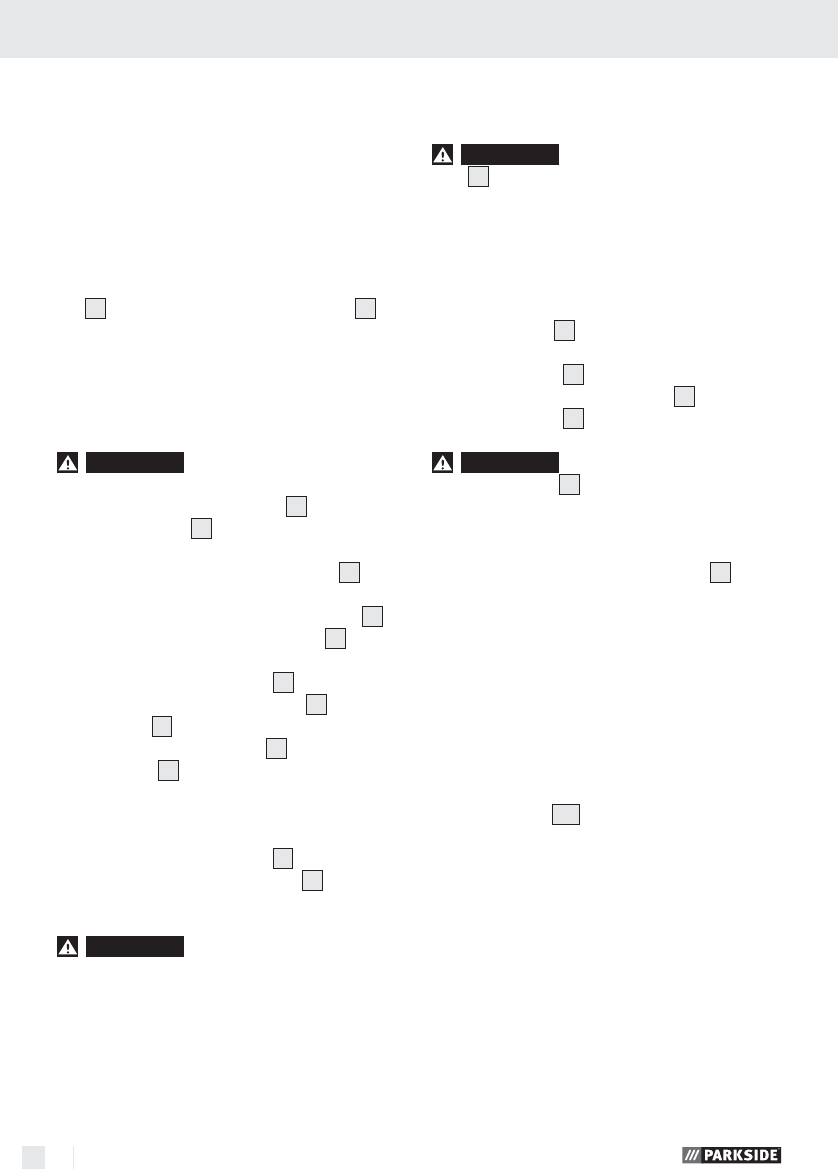
14 GB/IE
Preparing for use
Make sure that the cutting speed resulting from the
effects of different saw blades, materials and the
force you apply to advance the saw is always less
than the circumferential speed (CS) under no load.
©
Connecting the vacuum
sawdust extraction device
˽ Insert the adapter for vacuum sawdust removal
18
into the sawdust removal connector
17
.
˽ Connect a vacuum device approved for the
extraction of sawdust and splinters (see Fig. A).
©
Changing a saw blade
WARNING!
Press the spindle lock only after
the mains plug has been pulled out of the socket!
1. Then remove the guide fence
15
by releasing
the wing screw
13
.
2. Set the cutting depth (by means of the wing
screw for cutting depth setting clamp
5
) to
the minimum position, 0 mm.
3. Swing back the retractable blade guard
7
with the help of the retracting lever
7 a
and put
the device down.
4. Press the spindle lock button
4
(until it engages)
and release the clamping screw
24
using the
Allen key
6
. Now remove the clamping screw
with integral washer head
24
and the clamp-
ing flange
23
(see Fig. D).
5. Detach the saw blade.
6. The installation of a sawblade is done in the
reverse order.
7. Press the spindle lock button
4
(until it engages)
and tighten the clamping screw
24
using the
Allen key.
WARNING!
The arrow on the saw blade
must agree with the arrow showing the direction of
rotation (running direction shown on the device).
˽ Ensure that the saw blade is suitable for the
saw spindle speed.
©
Installing and setting
the riving knife
WARNING!
The distance between the riving
knife
16
and the saw blade must not be greater
than 5 mm. If the riving knife has been removed e.g.
for a plunge cut, this distance must be observed
again when the riving knife is reinstalled (see Fig. F).
Removing the riving knife (see Fig. E):
1. Release the wing screws of the cutting depth
setting clamp
5
and swing the circular saw
up until it meets the stop; this exposes the riving
knife mounting
25
.
2. Screw out the mounting screws
26
and remove
the riving knife
16
.
WARNING!
After completion of the plunge
cut the riving knife
16
must be reinstalled before
the circular saw is used for any other sawing tasks.
Setting the riving knife (see Fig. F):
Set the distance between the riving knife
16
and
the tips of the saw blade teeth to a maximum of
5 mm, and the distance between the tip of the riving
blade and the lowest point of the saw blade to a
maximum of 5 mm.
The distances to be set are illustrated in Fig. F.
©
Tips and tricks
˽ Use the cutting angle scale according to the
cutting angle
12 b
: rectangular cut = 0° mark,
45° cut = 45° mark.
˽ Breaking out of the cut edges of delicate sur-
faces, e.g. coated chipboard or doors, can be
avoided by applying masking tape in advance
along the cutting line. This has the additional
advantage that masking tape shows up the cut-
ting line better than a smooth surface. An even
more effective way of stopping the cut edges
from being broken out is to clamp a thin piece
of wood along the cutting line, which is then
also sawn through.


















